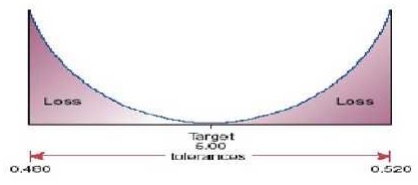Chapter: Mechanical : Total Quality Management (TQM) : TQM Tools & Techniques
Important Questions and Answers: Total Quality Management Tools and Techniques
1. What is meant by benchmarking?
The process of gathering
information about the ŌĆśbest quality product
manufacturing company ŌĆś in order to copy , follow and
excel, is known as benchmarking.
Benchmarking is defined as a
systematic method (or) popular TQM tool by which organizations can measure
themselves against the best industry practices.
2. What is meant by quality function deployment
(QFD)?
Quality function deployment (QFD)
is a TQM tool which ensures that customerŌĆÖs
requirements are met throughout the design process and also in the production
systems.
3. Write about House of quality.
The primary planning tool in QFD
is the House of Quality. House of Quality is a set of matrix used to translate
the voice of the customers into technical design requirement that meet specific
target values and characteristics of the final product. Because of its
structure, it is referred to as the ŌĆśHouse of
QualityŌĆÖ.
4. Name
different loss measurements in TPM?
a. Down time
losses ŌĆō Planned ŌĆō
Unplanned
b. Reduced
Speed Losses
c. Poor
Quality Losses
5. What is
meant by Failure Mode and Effect Analysis (FMEA) ?
Failure Mode and Effect Analysis
(FMEA) is an analytical technique which combines the technology and experience
of the people
To identify foreseeable failure modes of a product(or) process
To plan for its elimination.
6. Define Reliability.
Reliability is defined as the
probability of a product performing satisfactorily without failure of a
specified function under specified conditions for a specified period of time.
7. What is Debug failure ?
Debug includes a high failure
rate at the initial stages because of inappropriate use (or) flaws in the
design (or) manufacturing.
8. What are
the two important types of FMEA ?
1. Design
FMEA
2. Process
FMEA
9. What are
the three classes of customer needs?
1. Dissatisfiers:
are the needs that are expected in a product (or) service
2. Satisfiers:
are needs that customers say they want
3. Exciters/Delighters:
are new (or) innovative features that customer do not except.
10. Draw the Taguchi Loss
Function?

11. What are the three types of benchmarking?
1. Internal
benchmarking
2. Competitive
benchmarking
3. Process
benchmarking.
12.
Name different types of matrix diagrams.
1. L- Matrix
2. T- Matrix
3. Y- Matrix
4. X- Matrix
5. C-
Matrix.
13.
What is meant by performance efficiency?
Reduced speed losses are measured by tracking
performance efficiency using the Performance efficiency E=(C*N/T)*100
Where
C=Cycle time
N= Number
of units produced.
14. What are the three main categories of failure?
1. Debug
2. Chance
3. Wear out
15.
What are the six steps in benchmarking
process?
ŌĆó
Deciding what to benchmark
ŌĆó
Understanding current performance
ŌĆó
Planning
ŌĆó
Studying others
ŌĆó
Learning from the data
ŌĆó
Using the findings and taking action
Related Topics